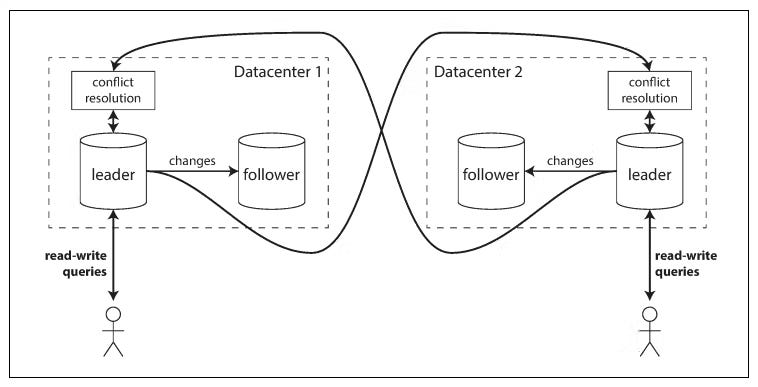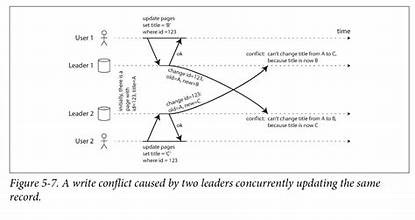How the single-leader and multi-leader configurations happen in a multi datacenter deployment?
Let's dissect
Single-Leader Configuration (Multi-Datacenter Deployment)
Performance:
Every write must go over the internet to the leader's datacenter, adding significant latency.
May defeat the purpose of having multiple datacenters.
Tolerance of Datacenter Outages:
If the leader datacenter fails, a follower in another datacenter can be promoted as the new leader (failover process).
Tolerance of Network Problems:
Very sensitive to inter-datacenter network issues since writes depend on synchronous communication with the leader datacenter.
Multi-Leader Configuration (Multi-Datacenter Deployment)
Performance:
Writes are processed in the local datacenter, hiding inter-datacenter network delays from users.
Better perceived performance due to asynchronous replication between datacenters.
Tolerance of Datacenter Outages:
Each datacenter can operate independently even during an outage, with replication catching up when the failed datacenter recovers.
Tolerance of Network Problems:
More resilient to inter-datacenter network interruptions as writes can still be processed locally.
Challenges:
Write Conflicts: Concurrent modifications of the same data in different datacenters require conflict resolution.
Subtle Issues: Autoincrement keys, triggers, and integrity constraints may behave unpredictably due to retrofitting of multi-leader replication in many databases.
Key Takeaways
Single-Leader Configurations are simpler but can suffer from latency and failover delays in multi-datacenter setups.
Multi-Leader Configurations offer better performance and fault tolerance but introduce complexities like write conflicts and configuration pitfalls.
Multi-leader replication is often considered risky and should be avoided unless absolutely necessary.
Image Source:-wikipedia



